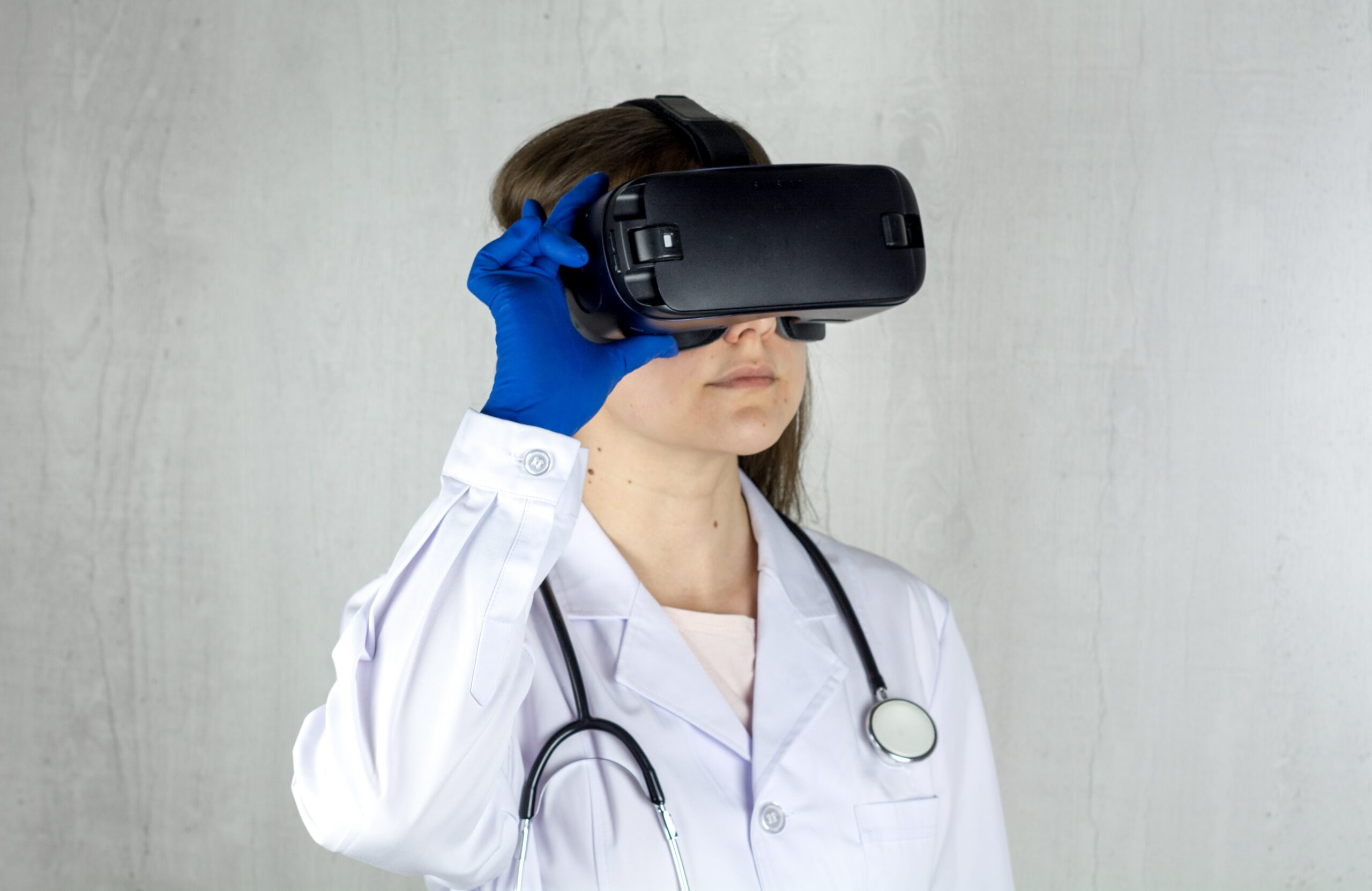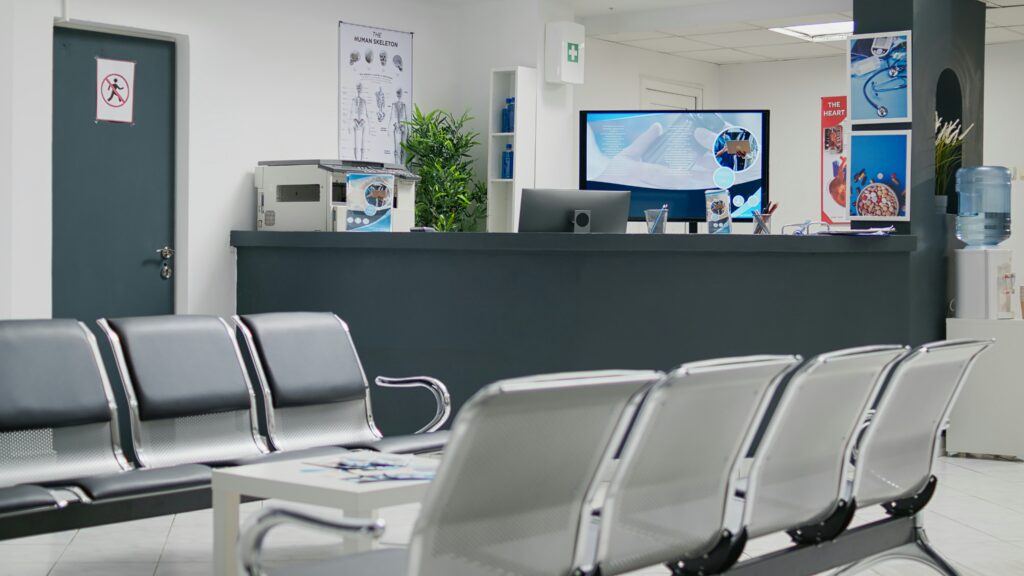The use of technology to deliver healthcare in Britain has leapt forward in recent years, thanks in part to the pandemic. This resulted in a rapid switch to technologies such as video calling, commonly called video consultations in healthcare, as a way of providing care remotely. There has also been an enthusiastic adoption of apps to access healthcare services, with 28 million people now using the NHS App in the UK and 40 million having an NHS login.
Technology is changing the way people think about the future of healthcare, especially within the NHS. To ensure the sector’s long-term sustainability and help tackle its growing list of challenges, it needs the right digital foundations in place – an outlook that is central to the NHS’s Hospital at Home initiative. The plan aims to deliver “a health and social care system that will be much faster and more effective, and deliver more personalized care”, where in the future, half a million people with long-term health conditions will be treated at home instead of in hospitals. This radical move will bring real-world impacts, from cutting waiting lists to improving the lives of elderly people.
Tackling data hold ups
Hospitals have always run on data, but historically have been inundated with never-ending piles of paper records that have been filed away slowly, often by hand. A broader shift to electronic patient records (EPR) and the safe sharing of patient data across all areas of the NHS and healthcare settings will be revolutionary to how it operates. Trusts across the UK are starting to implement ERP platforms which will provide clinicians with more information to make more effective decisions. They will have automatic access to support tools, meaning their decisions will be based on available information. It will also make staff more efficient, increase collaboration and create a smoother care journey for patients.
The biggest challenges facing the NHS today include the growing backlog of appointments and increased waiting times, which are only made worse when data isn’t utilized effectively. To enable remote care, healthcare providers need the infrastructure in place to effectively manage and analyze this data while maintaining connectivity. This will only become more pertinent with the rollout of 5G networks and the eventual shift to 6G, with the right network capabilities promising a richer healthcare ecosystem that can meet patient and provider needs more effectively. With this, technology such as internet-of-things (IoT) sensors and wearables will enable newer, quicker ways to understand and treat disease, driven by vast amounts of data collected from these systems.
Digital-first primary care can streamline the data gathered to create a more efficient healthcare system. The Hospital at Home program was introduced amid spiraling NHS waiting lists and initially focused on discharging people from hospital in a timely fashion, but the plans for virtual wards are now expanding.
Oxford University research has shown that Hospital at Home treatments can be equally as effective or even better than those in hospitals, particularly with elderly patients. Increased program adoption will see patients monitored by video calls, doctor visits and equipment to enable them to observe and treat conditions at home, lessening the pressure on waiting lists. Ultimately, it’s about delivering the same level of monitoring and care a patient might get inside a hospital, but in their chosen location.
Video calls as important as ambulances
Hospital at Home demonstrates how medical professionals can use technology to provide more efficient, immediate patient care, specifically with virtual consultations via video calls. During the pandemic, Great Ormond Street Hospital (GOSH) implemented video capabilities as a solution that would enable care continuity as seamlessly as possible.
In just eight days, GOSH deployed video-visit capabilities to 5,000 hospital staff and fully integrated into its EPR system, eventually moving all appointments to be fully online. These capabilities enabled GOSH to continue to provide the physical, social and emotional aspects of caring for children, which greatly supported families in isolation going through difficult situations, ensuring no one felt lonely. In fact, Dr Shankar Sridharan, consultant paediatric cardiologist and CCIO at GOSH, believes that video calls are as important as ambulances when it comes to treating patients, as both allow them to be seen by healthcare practitioners.
GOSH found that two-thirds of patients and parents who experienced a virtual consultation were likely to recommend a virtual visit. Describing its video-driven pandemic approach as a ‘hospital without walls’, this kickstarted a longer-term digital approach for the hospital. Now, the team are looking into other technologies, such as virtual trollies for bedside calling, connecting parents at home with children in hospital.
When creating an initiative such as Hospital at Home, video technology plays an essential role in breaking down physical barriers to access healthcare and ensuring the largest possible number of patients can be treated. The flexibility of video meetings is useful in many contexts, such as group clinics for long-term disease management, mental health therapy and rehabilitation and for patients that suffer from agoraphobia. Video technology also enables rapid-fire decision-making by delivering expertise to where it is needed, even in remote settings. Clinicians are able to consult specialists in critical care situations and doctors are enabled to make the right decisions faster and potentially save lives.
The flexibility of video consultations and remote care can free thousands of people from having to attend in-person appointments and prevent healthcare professionals from spending time traveling between consultations in different locations. This will enable them to dedicate more time to seeing more patients within a shift, reducing the backlog of appointments. Alongside this, the increased use of technology and video calls has meant more jobs in the sector can be done remotely – easing the stress and burnout that is being seen across the NHS. Research from Indeed has brought this to life, finding that from February 2020 to March 2023, there has been a 400 percent increase in remote roles for doctors and a 616 percent increase in remote roles for nurses.
VR and AI switch on new capabilities at the heart of healthcare
Aside from video consultations, a range of other technologies are playing their part in revolutionizing healthcare. Virtual reality (VR), for example, is assisting patients and healthcare providers in achieving better treatments and outcomes by improving surgical efficiency. For example, prior to an operation, a neurosurgeon can virtually explore a patient’s brain, giving them a unique way to prepare for what’s to come. It can also allow patients and their families to gain a better understanding of a procedure ahead of time.
VR also plays an integral role in training, providing an immersive, hands-on learning experience. By putting on a VR headset, a healthcare professional can treat virtual patients as they would in real life, and crucially, it allows for errors to be made, all of which can be learned from. For larger-scale learning, video platforms can deliver webinars to up to 50,000 attendees at once, delivering the training needed to empower the next generation of NHS nurses and doctors.
Technology can also assist patients who have more complex needs, for example, those that may be deaf or hard of hearing. The Hospital at Home initiative can provide options for everyone to participate in telehealth, with live transcriptions enabled by Artificial Intelligence (AI) generating captions in real-time as a clinician speaks. No longer will these patients feel neglected, as with real-time captions, they can be fully informed and kept up to date as the conversation happens. With Hospital at Home helping to look after frail or elderly patients who would otherwise have to spend time in hospital, such technologies can enable them to live fuller lives, closer to their loved ones.
A healthier future
With rising NHS queues, increasing strain on the healthcare industry, and burned-out staff, the Hospital at Home program couldn’t have come at a better time. But this initiative is just a small part of a wider journey towards a truly digital future for healthcare. While video will play a key role, it will be supported by a range of other technologies, from VR to AI and EPR, all playing their part to ensure we have a healthcare system that is fit for purpose. This will empower healthcare professionals to deliver better care to those who need it most.




